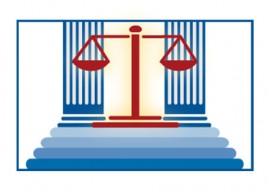Revisiting “Kassis”: Do Chinese Walls Still Work?
By Roy Simon [Originally published in NYPRR November 1999]
In Kassis v. Teacher’s Insurance and Annuity Association [1 No. 86, ___ N.Y.2d ___ (N.Y. 1999)], a unanimous Court of Appeals reversed the First Department and disqualified the firm of Thurm & Heller. While representing the defendant, the firm had hired an associate of the firm representing the plaintiff. The associate was personally disqualified because he had actively participated in the preparation of the plaintiff’s case. The Court imputed his disqualified to the entire Thurm & Heller firm under DR 5-105(D).
In its decision, the Court advised that a presumption of disqualification would not arise if…
“either the moving party fails to make any showing of a risk that the attorney changing firms acquired any client confidences in the prior employment or the nonmoving party disproves that the attorney had any opportunity to acquire confidential information in the former employment.”
The Court added:
The party seeking to avoid disqualification must prove that any information acquired by the disqualified lawyer is unlikely to be significant or material in the litigation. In that factual scenario, with the presumption rebutted, a Chinese Wall around the disqualified lawyer would be sufficient to avoid firm disqualification. [Citations omitted.]
In commenting on the Court of Appeals decision in this publication [NYPRR August 1999], I concluded that the Court was essentially mandating Chinese Walls whenever a lateral higher arrives with any information about pending litigation in which the hiring firm is opposing the lateral’s old firm.
First Department Rejects Disqualification
But, now, just when lawyers thought that even solid Chinese Walls around an associate could no longer defeat motions for disqualification by former clients of the associate’s firm, the First Department has issued a new construction permit. In Cummin v. Cummin [1999 WL 744252 (N.Y. 1st Dept., 9/23/1999)], the First Department reversed the disqualification of a law firm that had undeniably represented the former client in a substantially related matter.
The facts were elegantly simple. In 1992, Arch Cummin consulted for one or two hours with Robert Cohen, who was then head of the Matrimonial Department at Morrison, Cohen, Singer & Weinstein (Morrison, Cohen). They discussed Mr. Cummin’s real estate and security holdings, his separate property claims, and issues of custody and support. Mr. Cummin paid a $400 bill for a one-hour consultation, but then hired another firm to represent him in his divorce negotiations.
The negotiations dragged on for the next six years. In 1998, after a tentative settlement broke down, Mrs. Cummin contacted Steven Ruchefsky, who had since replaced Cohen as Chair of Morrison, Cohen’s Matrimonial Department. (Cohen remained with the firm as its Managing Partner.) Ruchefsky conducted a routine conflicts search — as every law firm is now required to do under DR 5-105(E) — and discovered the firm’s former consultation with Mr. Cummin. However, Ruchefsky also discovered that Morrison, Cohen had no record whatsoever of the earlier meeting between Mr. Cummin and Cohen except the bill for a one-hour consultation. The firm had no file, no notes, and no memoranda regarding the consultation, and Cohen did not remember anything about the consultation.
Morrison Firm Erects Chinese Wall
Could the firm agree to represent Mrs. Cummin in divorce proceedings even though the firm had consulted with her husband on the same matter six years earlier? Morrison, Cohen’s Ethics Conumittee concluded that it could, provided the firm immediately established a solid Chinese Wall to shield the case from any possible contact with Cohen.
This conclusion was firmly supported by the First Department’s earlier opinion in the Kassis case [243 A.D.2d 191, 678 N.Y.S.2d 32 (1st Dept., 6/16/1998)], later reversed by the Court of Appeals. The First Department had reversed the disqualification of Thurm & Heller because the firm had immediately erected a wall segregating the case files and all work and conversations relating to the case from the associate it had hired away from plaintiff’s counsel.
Lower Court Orders Disqualification
Nevertheless, Mr. Cummin’s counsel moved to disqualify Morrison, Cohen, citing Cohen’s “extended consultation” with Mr. Cummin in 1992, and arguing that plaintiff would not be prejudiced because the Cummins’ divorce case was still “in its inception.” In opposition, Morrison, Cohen cited “the absence of any record of the consultation six years earlier, Cohen’s lack of recollection, the steps taken by the firm to quarantine Cohen from the case, and a favorable opinion solicited from a law professor who was director of Hofstra University’s Institute for the Study of Legal Ethics.” (In the interest of full disclosure, I should reveal that I was the author of the opinion favorable to Morrison, Cohen.)
Justice Tolub granted the motion to disqualify on the grounds that the matters were substantially related and that he saw an appearance of impropriety. Morrison, Cohen appealed.
On July 1, 1999, while Morrison, Cohen’s appeal from its disqualification in the Cummin case was still pending, the Court of Appeals reversed the First Department’s holding in Kassis, deciding in essence, as we have seen, that even the fanciest, tightest Chinese Wall will not avert disqualification when a law firm hires an opposing lawyer in the midst of litigation.
Did the Court of Appeals decision mean Morrison, Cohen’s Chinese Wall was ineffective? Was its appeal doomed?
First Department Reversed Lower Court
The First Department read the Kassis decision carefully and reversed Morrison, Cohen’s disqualification. The Cummin v. Cummin court, in a unanimous memorandum decision, began by noting that the “presumption of shared confidences” that arises under DR 5-108(A) in substantially related matters is a rebuttable presumption. The court then explained its understanding of the Court of Appeals decision in Kassis:
What distinguished that case was the attorney’s lead and active role in the case at the prior firm, his regular contact with the client, and his familiarity with all the details of the former client’s confidences. None of these factors is present here. Indeed, the Court of Appeals implied that the presumption could be rebutted where confidential information previously acquired by a large firm, but never shared among its associates, could be physically isolated, such as with the erection of a “Chinese Wall.”
The Cummin case, the First Department said, was entirely different. The court stated:
Here, there are no notes or memoranda of the substance of the 1992 consultation in existence at Morrison, Cohen, and there is no indication that any of the data was shared by attorney Cohen with any of his colleagues at the time. Furthermore, the screening mechanism implemented by the Morrison, Cohen firm to protect any confidences that may have been divulged by defendant six years earlier constituted an adequate safeguard against even the appearance of impropriety.
Accordingly, the First Department held that Morrison, Cohen had successfully rebutted the presumption of shared confidences and that the court below should have denied the motion to disqualify.
Lessons to Be Learned
What lessons should lawyers draw from the First Department’s decision in Cummin v. Cummin? As I see it, there are three main lessons:
1. There is no substitute for a prompt and thorough check for conflicts of interest, and the prompt establishment of an impenetrable Chinese Wall if a conflict is discovered. Morrison, Cohen would not have been able to avoid disqualification if it had not learned about the former client conflict right away, because a Chinese Wall must be erected at the outset of an adverse representation.
2. When a lawyer interviews a prospective client, the lawyer should not talk about the matter to other lawyers in the firm unless there is a reason to do so. Of course, lawyers should talk to their colleagues about a prospective client if the colleagues can generate creative ideas that may help the firm land the client, or can help evaluate the case so that the firm does not accept representations it will regret later. I am not suggesting a blanket policy against collegial communication. But idle lunchroom chatter about a prospective client without any definite purpose may lead to disqualification in the future.
3. When a prospective client decides not to hire a lawyer after an initial consultation, the lawyer should not create a file and should ordinarily destroy any notes or memos about the initial consultation. Unless the lawyer thinks the client may return later to hire him, the notes have no purpose and can only cause problems later.
A law firm that follows these three principles will often be able to avoid any appearance of impropriety and defeat disqualification. In short, even after the Court of Appeals decision in Kassis, Chinese Walls are alive and well in New York under the proper circumstances and if the requisite precautions are taken.
Roy Simon is a Professor of Law at Hofstra University School of Law, where he serves as Director of Hofstra’s Institute for the Study of Legal Ethics. He is the author of Simon’s New York Code of Professional Responsibility Annotated, published annually by West. Professor Simon served as an expert witness on behalf of Morrison, Cohen, Singer & Weinstein in opposing disqualification in the Cummin matter.
DISCLAIMER: This article provides general coverage of its subject area and is presented to the reader for informational purposes only with the understanding that the laws governing legal ethics and professional responsibility are always changing. The information in this article is not a substitute for legal advice and may not be suitable in a particular situation. Consult your attorney for legal advice. New York Legal Ethics Reporter provides this article with the understanding that neither New York Legal Ethics Reporter LLC, nor Frankfurt Kurnit Klein & Selz, nor Hofstra University, nor their representatives, nor any of the authors are engaged herein in rendering legal advice. New York Legal Ethics Reporter LLC, Frankfurt Kurnit Klein & Selz, Hofstra University, their representatives, and the authors shall not be liable for any damages resulting from any error, inaccuracy, or omission.
Related Posts
« Misdeeds of Clients & Lawyer’s Response Spoliation of Evidence: What Are Ethics Issues? »








